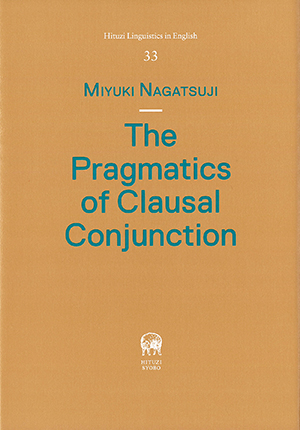2021年2月刊行

Hituzi Linguistics in English No.33
The Pragmatics of Clausal Conjunction
長辻󠄀幸 著
定価9800円+税 菊判上製カバー装 178頁
ISBN978-4-8234-1069-7
 |
Hituzi Linguistics in English No.33The Pragmatics of Clausal Conjunction長辻󠄀幸 著 定価9800円+税 菊判上製カバー装 178頁 ISBN978-4-8234-1069-7 |


